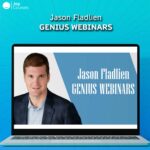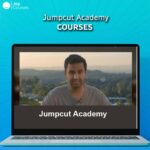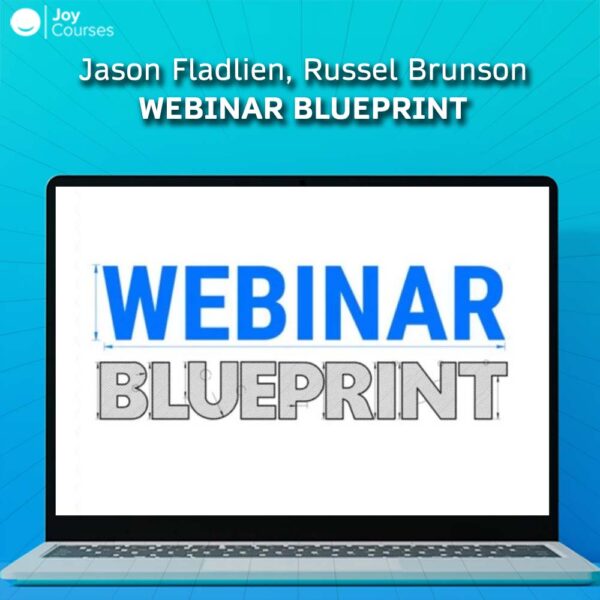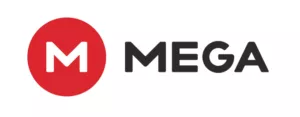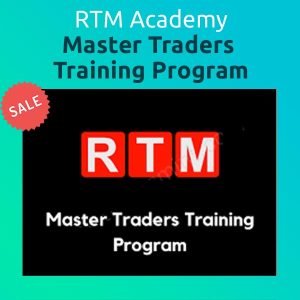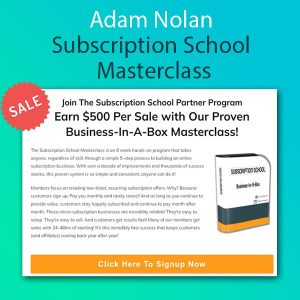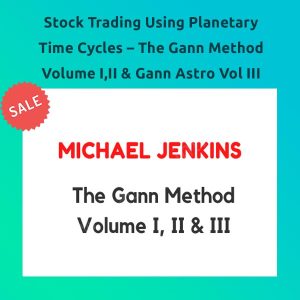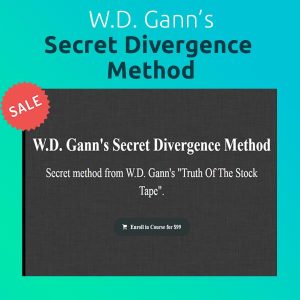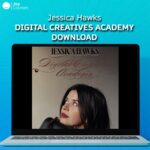Description
Download Proof | Jason Fladlien, Russel Brunson – Webinar Blueprint
![]()

Jason Fladlien and Russell Brunson are both well-known names in the webinar space, and while they each have their own approaches to webinars, there are commonalities in their strategies. Here’s an outline of their respective webinar blueprints and how their methods overlap or differ:
Jason Fladlien’s Webinar Blueprint
Fladlien is renowned for his ability to structure webinars that generate millions in sales. His blueprint emphasizes psychological triggers, value stacking, and flawless delivery.
Key Elements of Fladlien’s Blueprint
- Pre-Webinar Setup:
- Registrations: Optimize landing pages with strong hooks and clear benefits.
- Warm-Up Content: Use email sequences or videos before the webinar to build excitement and prepare the audience.
- Webinar Structure:
- Introduction:
- Establish credibility and rapport.
- State the “Big Promise” of what attendees will gain.
- Content Delivery:
- Teach 2–3 actionable insights related to your offer.
- Use case studies and examples to make concepts relatable.
- The Offer (Pitch):
- Introduce your solution as the logical next step.
- Use a Value Stack: Break the offer into components and show how each adds immense value.
- Address objections directly with testimonials, guarantees, and FAQ sections.
- Close with Urgency:
- Limited-time bonuses, price discounts, or enrollment deadlines.
- Introduction:
- Psychological Triggers:
- Scarcity, social proof, reciprocity, and authority.
- Use these strategically throughout the webinar to build trust and drive action.
- Follow-Up Sequence:
- Automated emails to attendees who didn’t purchase.
- Provide replay links, address objections, and offer additional incentives.
Russell Brunson’s Perfect Webinar Script
Brunson’s webinar framework, often referred to as the Perfect Webinar Script, is a step-by-step formula designed to sell high-ticket offers through storytelling and persuasion.
Key Elements of Brunson’s Blueprint
- The One Thing:
- The entire webinar revolves around one central Big Idea or promise.
- Example: “The ONE thing you need to know to achieve [desired result] without [undesirable action].”
- Webinar Structure:
- Introduction (10–15 minutes):
- Create curiosity and establish your credibility.
- Share your “Epiphany Bridge” story—a personal story that connects emotionally with the audience and introduces your solution.
- Content (45–60 minutes):
- Teach the 3 Core Secrets that break false beliefs:
- Vehicle Belief: Why your method works.
- Internal Belief: How they can succeed with it.
- External Belief: Overcoming external obstacles (e.g., time, money).
- Use examples, analogies, and proof to reinforce each point.
- Teach the 3 Core Secrets that break false beliefs:
- The Offer (Pitch) (15–20 minutes):
- Introduce your product or service as the solution to the “One Thing.”
- Use the Stack:
- List all components of the offer (bonuses, guarantees, etc.).
- Highlight the value of each item to exceed the price point.
- Create urgency with a deadline, scarcity, or time-sensitive bonuses.
- Introduction (10–15 minutes):
- Closing and Q&A:
- Handle objections live using success stories and logic.
- Encourage attendees to take action with clarity and confidence.
Common Strategies Between Fladlien and Brunson
- Storytelling: Both emphasize storytelling to connect emotionally with the audience and pre-sell the offer.
- Value Stacking: Fladlien and Brunson both use value stacking to make offers feel irresistible by overdelivering in perceived value.
- Psychological Triggers: Scarcity, social proof, and authority are pillars in both approaches.
- High-Value Teaching: Webinars should deliver actionable content that builds trust and positions the offer as the natural next step.
- Urgency and Scarcity: Limited-time bonuses or deadlines are critical to driving immediate action.
Key Differences
| Jason Fladlien | Russell Brunson |
|---|---|
| Focuses heavily on direct psychological triggers to create a sales environment. | Emphasizes breaking false beliefs to shift the audience’s mindset. |
| More flexible in webinar structure, allowing for live or automated delivery. | Follows a rigid structure designed for live presentation. |
| Often uses long-form webinars (90+ minutes) with extensive Q&A sessions. | Prioritizes a compact 90-minute format with defined sections. |
| Targets advanced marketers and those with high-ticket offers. | Focused on entrepreneurs at any level, selling courses, coaching, or products. |
Which Blueprint Should You Use?
- Jason Fladlien’s Blueprint: Ideal for those selling high-ticket products or services where trust and authority are crucial. His approach works well for technical or complex offers that require more explanation.
- Russell Brunson’s Perfect Webinar: Best for beginners or those with a simple, scalable offer. Brunson’s structure is easy to follow and works well for mid-range to high-ticket products.
Next Steps
Would you like help crafting a webinar using one of these blueprints? Or do you need tools, templates, or specific advice on building your webinar funnel? Let me know!
